This is the fourth in a series of posts about the Sony alpha 9 Mark II, aka the a9II. The series starts here. You can find other posts in this series by using the category list on the right, and selecting “a9II”.
The particulars change from model to model and from one firmware release to the next, but the Sony a9 and a7x cameras have long had a low-pass filter incorporated for long exposures. Presumably, this is done to reduce noise, but it can have deleterious effects on the sharpness of images, in some cases suppressing stars in night shots.
The read noise of the a9II drops suddenly on exposures of 20 seconds and longer, indicating that this is the shutter speed when the noise reduction digital signal processing kicks in.
If we look at the read noise spectra for the four raw channels for an exposure of 15 seconds, we see this:
But when we increase the shutter speed to 20 seconds, there is attenuation of the higher frequencies:
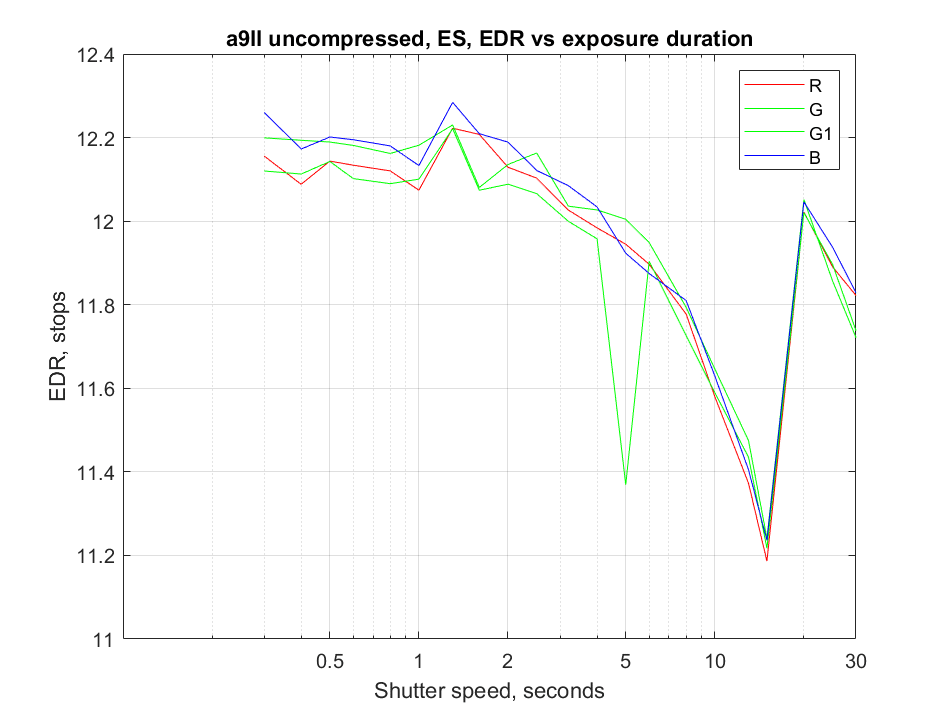
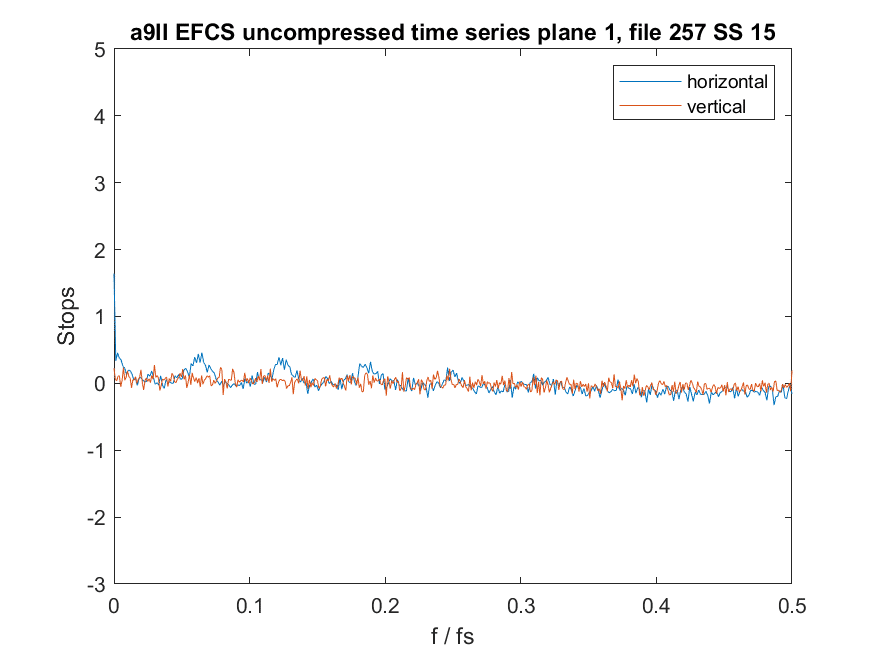

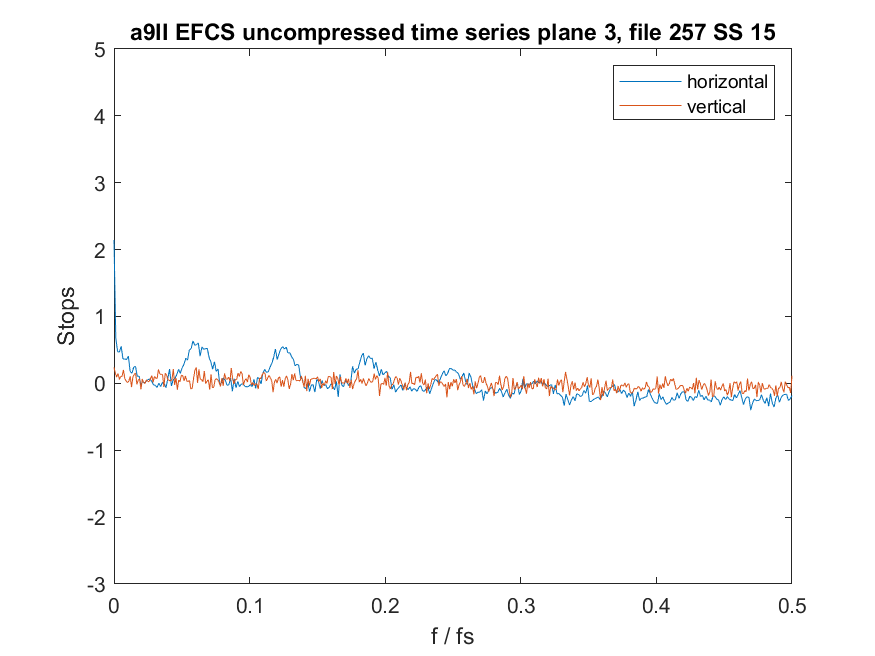
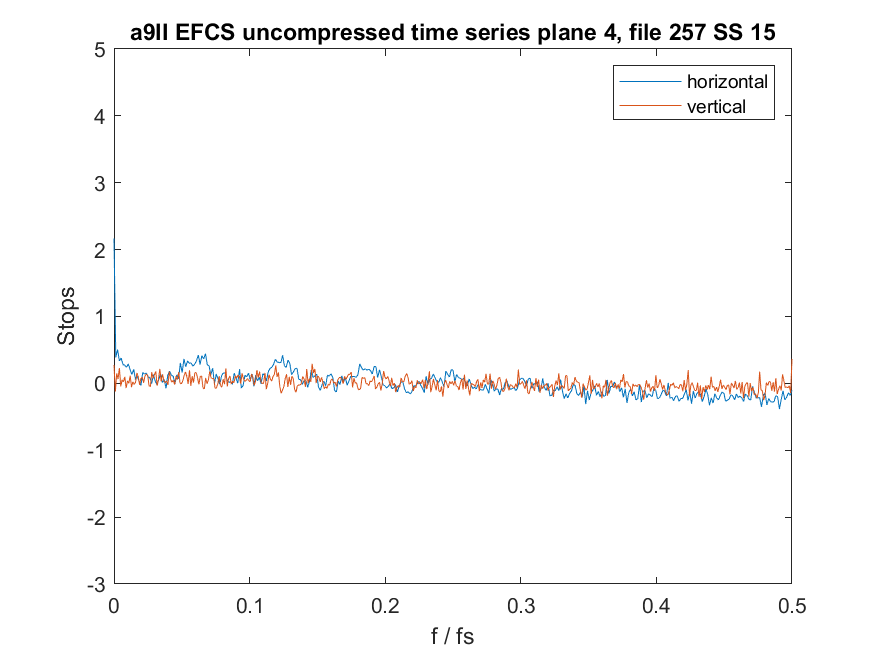
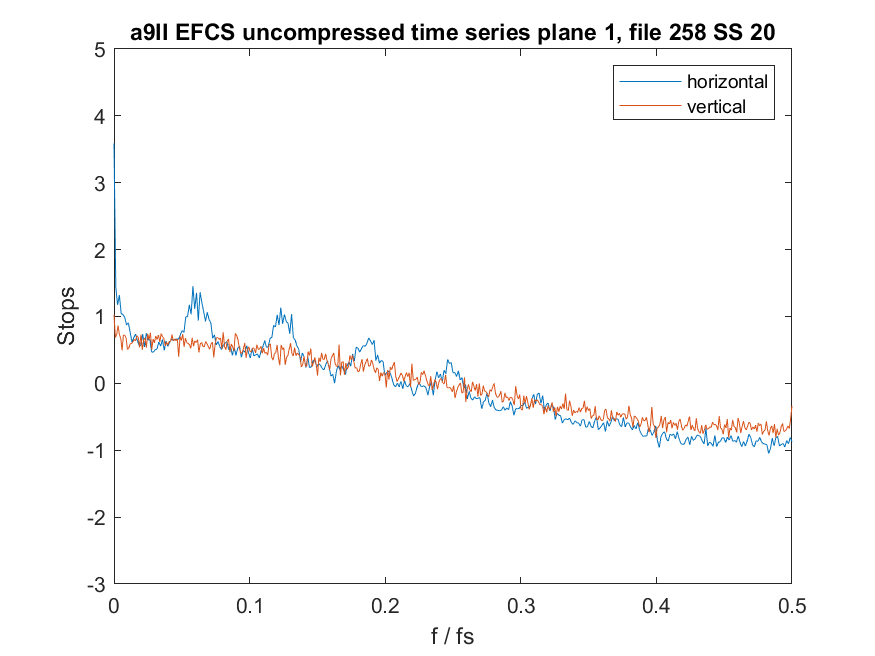
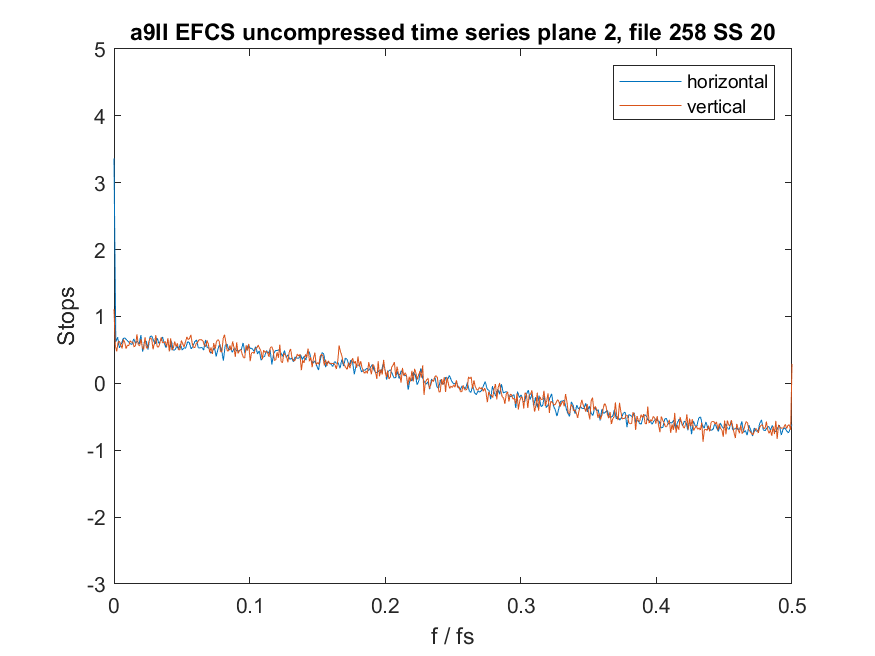
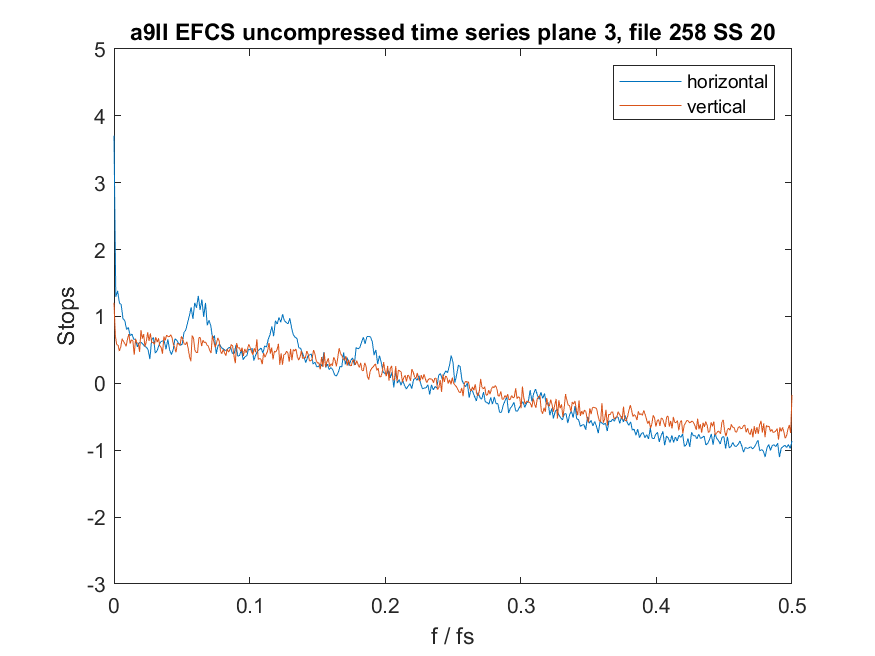
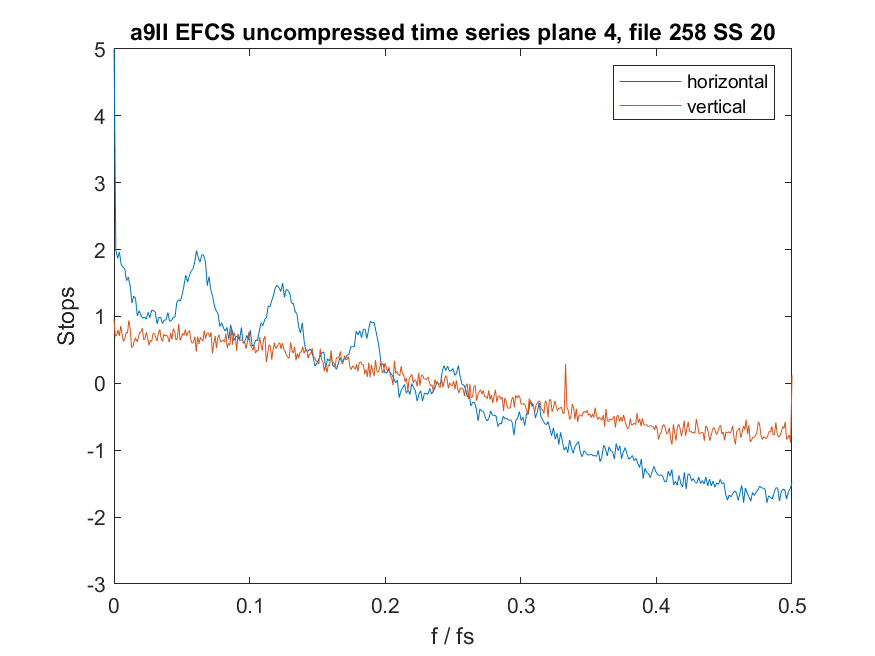
[…] Jim Kasson produces similar plots, for instance here. The principle is the same, though I believe that Jim uses different normalization parameters so […]